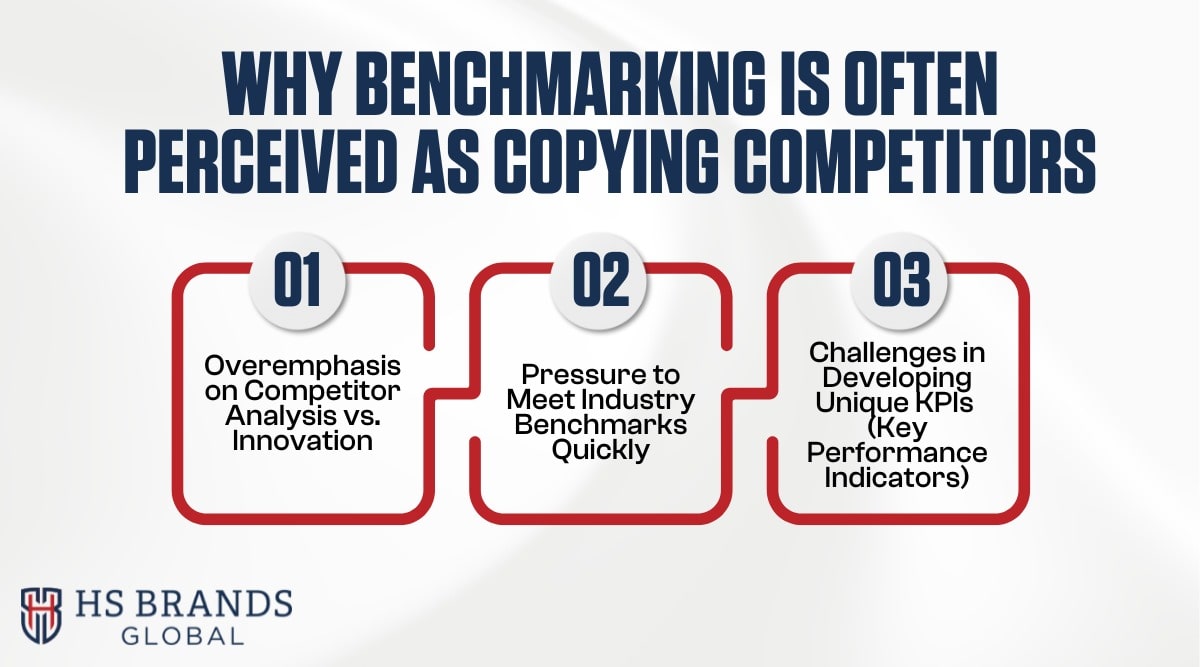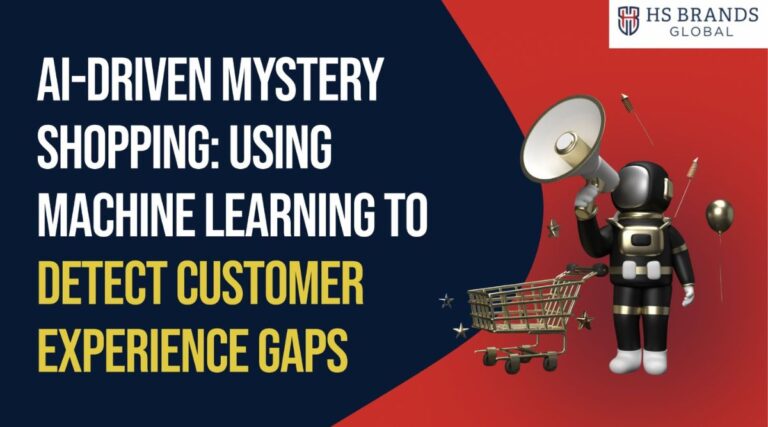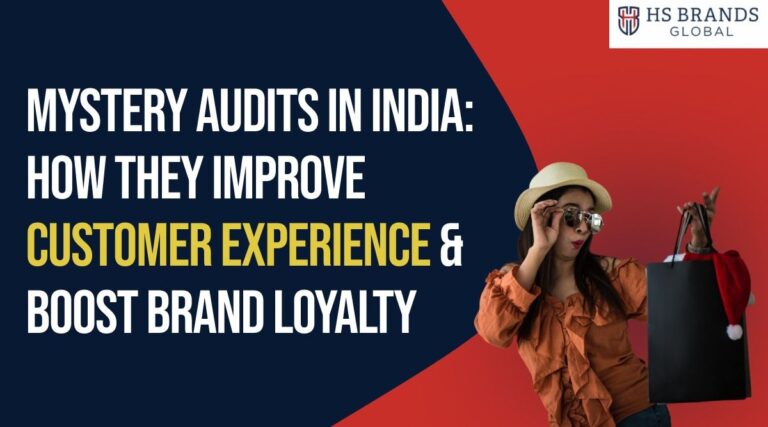Is Benchmarking with Competition just another way of copying? Competitive benchmarking is more than just mimicking what others do for people who want to succeed fast. At its core, Benchmarking is a business technique allowing companies to evaluate their products, services, and approaches against the best in their industry. This approach teaches one to learn from competitors, identify best practices, and then modify them to meet their own requirements.
The goal of Benchmarking with Competition and around the world is to leverage insights, not to lose originality. Measuring helps businesses find performance gaps, streamline procedures, and finally increase customer satisfaction using insights.
Businesses run the danger of losing their special qualities and losing their competitiveness when they stop evolving and start copying. Although honest Benchmarking with Competition can provide companies with valuable insights, the secret to success is to use these ideas creatively rather than by imitating what others have done.
The Thin Line between Benchmarking and Copying
If it wants to be really effective, Benchmarking with Competition should be a learning tool rather than a duplicating instrument. This minor difference becomes increasingly crucial when companies investigate competing approaches for operations, product development, or marketing.
Benchmarking with Competition often involves a thorough study of how successful companies run, including their products, pricing strategies, customer service programs, and promotional activities. Even if this study can find outstanding techniques, there is a thin line between just replicating competitors’ tactics and learning from them.
Let’s look at retail. Seeing how effective its competitor’s loyalty program is, one retailer could decide to launch one of their own. This loyalty program could not fit the unique customer of the new business if it were just a copy-paste job. It may, therefore, not involve customers in the same way. Businesses must also ensure that their efforts to measure competitors remain true to the essence of their brand.
Why benchmarking with competition Is Often Perceived as Copying Competitors
Overemphasis on Competitor Analysis vs. Innovation
Businesses risk appearing too similar to their competition if they place too much importance on measuring their rivals. Companies often base their approach on statistics from overly thorough competitive evaluations, which is a mistake.
A Harvard Business Review study highlights that half of the companies that overstretch their resources on competitor analysis fail to maintain their long-term development. This is so because, many times, these companies neglect to give their own uniqueness and creativity a top priority. A retail brand cannot simply mimic another company’s loyalty program if it is to prosper. It should be tailored to its target market. Consequently, they appear to be a pale replica of the original rather than unique from their competitors.
For instance, take the mobile phone industry, where other businesses adopted Apple’s pricing and design. These companies offered their originality in the process, resulting in a congested market in which almost every item had the same look and use.
Pressure to Meet Industry Benchmarks Quickly
Companies are under great pressure to satisfy the industry’s rapid needs as competition becomes challenging. Many individuals adopt Benchmarking with Competition strategies without carefully considering how well they match the vision and goals of their company out of urgency. Then, what would be the result? In an attempt to remain competitive, companies miss the opportunity to differentiate themselves by imitating marketing plans, product designs, and pricing policies.
Take the mobile phone industry as an example, where other businesses copied Apple’s pricing and look. These companies offered their originality in the process, therefore producing a congested market in which almost every product had the same look and use.
Challenges in Developing Unique KPIs (Key Performance Indicators)
To really track progress, businesses have to create clear, specific KPIs. When KPIs are meant just to monitor Benchmarking with Competition rather than a brand’s aim, businesses end up giving generic industry standards first priority. Many times, this pulls individuals from their own goals.
For instance, IT companies often rely on conventional KPIs like client satisfaction levels. However, if they examined more deeply, they could find additional specialized indicators that would inspire new advancements catered to their specific market. Benchmarking with Competition becomes a tool for understanding rather than imitating when KPIs are especially meant for the business situation.
The Pitfall of “Follow-the-Leader” Syndrome
In this fast-paced corporate climate, companies are prone to follow-the-leader syndrome, in which case the actions of rivals come before their own goals and benefits. This trend-driven approach stunts innovation as companies are too focused on replicating their competitors instead of developing their own unique talents.
Researchers have found that businesses that are known for making unique goods and services tend to have loyal customers. According to one Gallup survey, consumers of companies renowned for offering something distinctive are 37% more engaged. If businesses follow competitors too closely, they risk losing this type of devotion.
How Copying Hampers Long-Term Competitive Advantage
One main drawback of copying competitors is the loss of brand originality. Companies that only imitate their competitors lose their uniqueness and struggle to establish a lasting impact on their customers. Lack of originality causes the company’s market position to deteriorate and makes it more challenging to build real brand loyalty or create a lasting competitive advantage. Without a distinctive identity, customers cannot find a compelling enough reason to prefer that brand over its rivals, thereby missing opportunities for market growth and brand loyalty.
Kodak is a major participant in the film photography business that lacked innovation and adaptation throughout the digital transformation. While other businesses rapidly entered the digital arena, Kodak kept limited to traditional film processes rather than aggressively embracing the prospects of digital photography.
Kodak had early access to digital technologies, but its reluctance to explore new industries caused a dramatic drop in market share and finally the company’s failure. As this story shows, companies should move to create their own paths rather than relying on the strategies of their competitors. Being relevant and having a long-term advantage in a fast changing industry requires focusing on invention instead of imitation.
Strategies to Avoid Benchmarking from Becoming Copying
Businesses must design their strategy for Benchmarking with Competition so that they maximize their benefits and avoid the trap of imitating others. These actions will enable one to ensure that measuring results in fresh ideas rather than duplication:
Focus on Customer Needs over Competitor Movements
Maintaining the main engagement on consumer needs is a smart approach to ensure that benchmarking with competition continues to be a development tool. By using internal data and customer feedback, companies can help create strategies that appeal to their target market. Giving customer feedback first attention will help companies develop unique ideas instead of duplicating competitors.
A perfect example is Netflix’s use of data-driven insights based on consumer preferences instead of replicating rival streaming providers. By focusing on individual needs, Netflix has delivered tailored material to viewers that maintain their attention and loyalty.
Innovate by Enhancing, Not Imitating, Best Practices
Straight copying should not be done via Benchmarking with Competition; rather, it should be a means of inspiration for development. Expanding on industry best practices to create something original will help companies develop a competitive edge. For example, Starbucks examined the customer service practices of its competitors but enhanced its products to include a very unique environment and a highly tailored experience. Starbucks became known as a high-end coffee shop that values its customers by adopting this approach.
Develop Unique KPIs to Align with Company Vision
KPIs should closely match the objectives and purpose of a company to make sure Benchmarking with Competition enhances rather than controls strategy. One outstanding illustration of this is Tesla. Differentiating oneself from other automakers that give conventional KPIs top priority by concentrating on sustainability and innovation helps Tesla. With this special KPI structure, Tesla can efficiently Benchmarking with Competition for expansion while also maintaining its brand identification.
Conclusion
For businesses trying to stay competitive, Benchmarking with Competition is a great tool; however, it should be used with a clear eye on insights and self-improvement instead of imitation. Companies have a higher chance of reaching sustainable development when they mix creative plans with the insights acquired via Benchmarking with Competition.
Sustainable success ultimately rests on blending industry knowledge with original, value-driven approaches. Companies that accomplish this create long-lasting development, increase client loyalty, and differentiate themselves in packed marketplaces. Companies that prioritize uniqueness over imitation gain a position in the market and build client confidence.
HS Brands Asia, one of India’s best service providers in competitive benchmarking is at your service for promising results. They provide a multifaceted Benchmarking with Competition service that helps businesses accelerate development, improve customer experience, and gain a competitive edge in their sector through expert knowledge and a strategic approach.








